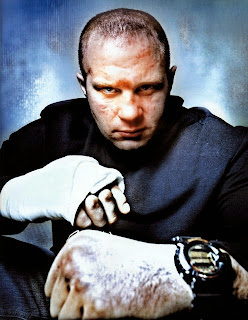Catch Wrestling isn’t a sport. Its combat up close and personal.100′s of techniques make up catch -wrestling arsenal: hand strikes, kicks, take downs, sweeps, gouges, arm locks, leg locks, torso cranks, chokes, rips and so on. It started back in the 1800′s. It wasn’t an entertainment spectacle like the WWE: it was legitimate wrestling with submissions. The immigrants who came to USA brought their techniques which were integrated into Catch Wrestling. The Europeans brought their wrestling; the Japanese brought their Jiu-Jitsu, etc. A lot of the Catch Wrestlers of the USA defeated a bunch of the top Judo Jiu-Jitsu guys in the early 1900′s.
At present, Catch Wrestling promoters try to sell Catch as “America’s martial art tradition.” That’s a stupid reason for learning a martial art as it places culture above science. Eventually that leads to bullshido. 
Catch Wrestling has a very aggressive manner of causing constant pain and pressure on your opponent. Catch Wrestlers tend to look to cause constant pain and pressure regardless of the position. Pain and pressure is your tool for setting up submissions. Catch wrestling always looks to have the top position and that shows in the training. Catch wrestling also emphasizes physical conditioning and strength. Much of catch’s bread and butter-leg locks, compression holds and neck-cranks are more suited to an MMA fight than a no-gi grappling tournament where many of those holds are heavily regulated if not banned.
Comparison with Judo, BJJ and Sambo
In simple terms,
Catch puts submissions before positioning
Judo focuses on takedowns with the gi
BJJ focuses on positioning before submissions
Sambo prefers leg locks when on the ground
Jiu-Jitsu (specifically BJJ that is) is a much more technical sport than Catch whereas it relies on technique to setup the escapes and submissions, etc. rather than bullying so to speak. Meaning JJ is a more relaxed style of grappling and focuses on conserving energy while using your opponent’s energy against him/him. This is common to most styles as well but JJ takes it to another level. When it comes to submissions, Catch has a wider appreciation of body mechanics and of thinking innovatively. BJJ and some forms of submissions styles have a particular set of techniques. The best example of this is probably the open guard. BJJ tries to pass. Catch tries to sub – with foot locks, diving foot locks, calf compressions, etc. While the bottom guard game is studied, it is not near the amount of technical proficiency as it is with BJJ. Kazushi Sakuraba was trained in Catch as Catch Can Wrestling. Probably that was his secret to his successful domination over the Gracies.But BJJ guys like Schembri and Nogueira have also beaten Sakuraba, which shows that it’s not always BJJ > Catch or Catch > BJJ.
Judo is also highly technical and has a strong emphasis on the standing game. Judo is an amazing standing art for throwing, takedowns, etc. I feel on the ground there is too much focus on stalling to get the standup back. Judo practitioners also are very aggressive.
Sambo covers the entire range of skills needed whether it is sport or self-defense. Sambo takes what is useful from any source available and discards what is not. Sambo has equal emphasis on standing throws and takedowns, striking, self-defense, ground positions, etc. Catch is behind Sambo in terms of standing work. Specifically in throwing and striking. Catch technically doesn’t incorporate any striking material although modern day practitioners have added striking.
Every style and every technique are more alike than not. What separates them is the broad philosophy and tactics of the arts.
In the end, we have to realize that everyone has their own style and type of ground fighting. Strictly segregating techniques and philosophies into any one style limits you too much. You have to learn or experience as many as you can, then pick what works for you. Grappling is grappling. You have to involve aspects of all styles period- or you’ll get owned by someone practicing something you’ve never seen period. There are different avenues, but submission grappling, submission wrestling….its just terminology- all referring to the same thing.
It’s a rambling post but hopefully you got my drift.












